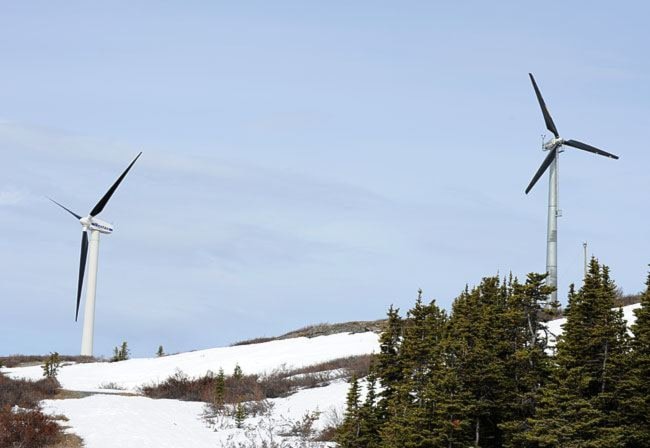Yukon Energy is setting the turbines in motion on a plan that could see up to 10 megawatts of new wind power in the territory.
The plan is to figure out the best spot for a five-to-10 megawatt wind farm, so that it can be quickly built as Yukon’s growing power demand requires.
“We recognize that wind is a valuable option in our energy tool box,” Yukon Energy president Andrew Hall said in a news release.
“It is renewable, can be developed in a reasonable time frame, and is scalable. We see this as an appropriate mid-scale solution to meet the territory’s mid-term electricity needs.”
The territory is running out of cheap hydro power and increasingly relying on diesel generators in times of peak demand, especially during cold winter months.
But diesel is expensive. Construction is underway in Whitehorse to get two new liquefied natural gas generators up and running, which will save on diesel costs.
Plans for new hydro are also in the works, but a new plant isn’t expected to come online for at least a decade.
And so Yukon Energy hopes to expand its wind power capacity, which would decrease reliance on fossil fuels.
Currently there are two wind turbines installed on Haeckel Hill in Whitehorse, with a combined capacity of 750 kilowatts.
One of the turbines, with 150 kilowatts of capacity, has reached the end of its life and will be decommissioned next year.
The corporation is considering two sites for the planned wind farm.
It completed wind data collection at Tehcho (formerly Ferry Hill) near Stewart Crossing this year, and will collect comparable data at Mount Sumanik near Whitehorse over the next 18 months.
The results of that data will help Yukon Energy decide which site will host the planned wind farm.
When construction starts will depend on how quickly the territory’s power demand grows, along with other considerations.
Yukon Energy will also spend time consulting First Nations, the public and other stakeholders on the plans.
Through the design work the corporation will examine different technologies that make it possible to store wind power, such as large-scale batteries, compressed air storage, ultracapacitors, pump storage and electric thermal storage.
“Since wind power is intermittent, it is challenging to integrate as an energy source into an isolated grid such as ours,” Hall said. “That’s why, as a key part of this work, we will be taking a close look at the integration of wind energy into our system and assessing different technologies and options for firming up wind supply.”
Contact Jacqueline Ronson at jronson@yukon-news.com
